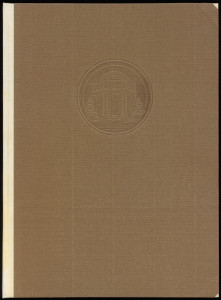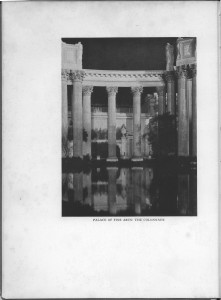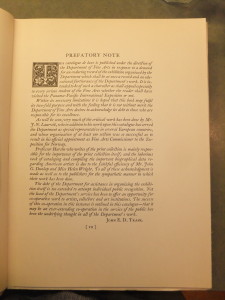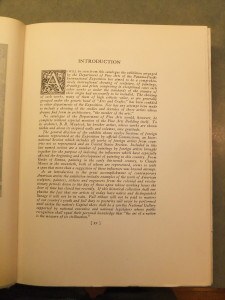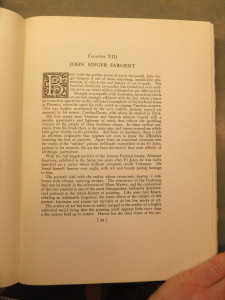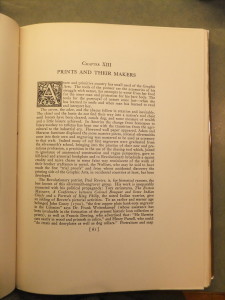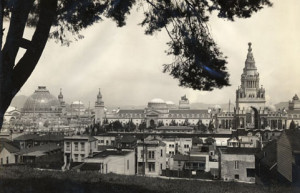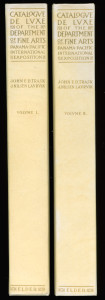
One hundred years ago today, on 20 February 1915, San Francisco opened its doors to the world. The sparkling Panama-Pacific International Exposition was laid out on 625 acres on the northern shore of San Francisco, what is now the Marina district. Officially, the Exposition celebrated the recent opening of the Panama Canal, but everyone knew that it was really San Francisco’s way of showing that it had recovered from the catastrophic 1906 earthquake and fire.
Some fairs call their grand buildings ‘pavilions,’ but at the PPIE they were called ‘palaces.’ There was a Palace of Agriculture, a Palace of Liberal Arts, a Palace of Transportation, a Palace of Mines and Metallurgy, and several other palaces, including, of course, architect Bernard Maybeck’s masterpiece (and one of the few surviving relics of the PPIE), the Palace of Fine Arts.
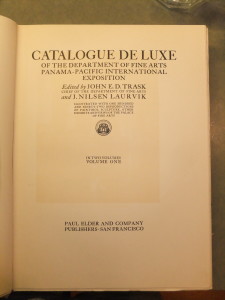
Paul Elder’s strategy was to capitalize on the fair for all it was worth. First, Elder hired Maybeck to design a booth for him in the Palace of Industry. Elder was a repeat customer: Maybeck had designed both Elder’s 1906 bookstore on Van Ness and the 1909 store on Grant.
Second, Elder had ready ‘in the can’ a dozen new titles specifically related to the PPIE. Most of them sold well, and several went into multiple printings.
The grandest and most elegant of those titles was the Catalog Deluxe of the Panama-Pacific International Exposition, a two-volume limited edition of 1000 copies with vellum spines and copious photographs. The Catalog Deluxe contains a complete listing of everything that was displayed in the Palace of Fine Arts, along with where they could be found for viewing. There is not much text for reading; most is in Volume I in the form of profiles of genres and famous artists.
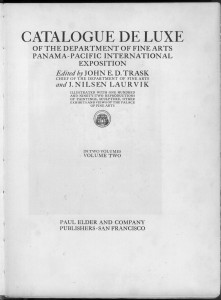
John Ellingwood Donnell Trask (1871–16 Apr 1926) was Chief of the Department of Fine Arts at the PPIE. Previously he had been Secretary and Manager of the Pennsylvania Academy of the Fine Arts (1905–1913), the United States Commissioner General to the Exposicion Internacional de Arte del Centenario at Buenos Aires, Argentina, and to the Exposicion Internacional de Bellas Artes at Santiago, Chile, as well as to a special art exhibition at Montevideo. He also wrote a short poem printed on the frontispiece tissue guard of Bernard Maybeck’s Palace of Fine Arts and Lagoon.
John Nilsen Laurvik (1877-1953) had a huge impact on international art at the PPIE. Through the contacts of his Hungarian wife Elma Palos, he arranged for the exhibition of hundreds of paintings despite the ravages of World War I that was affecting Europe.
